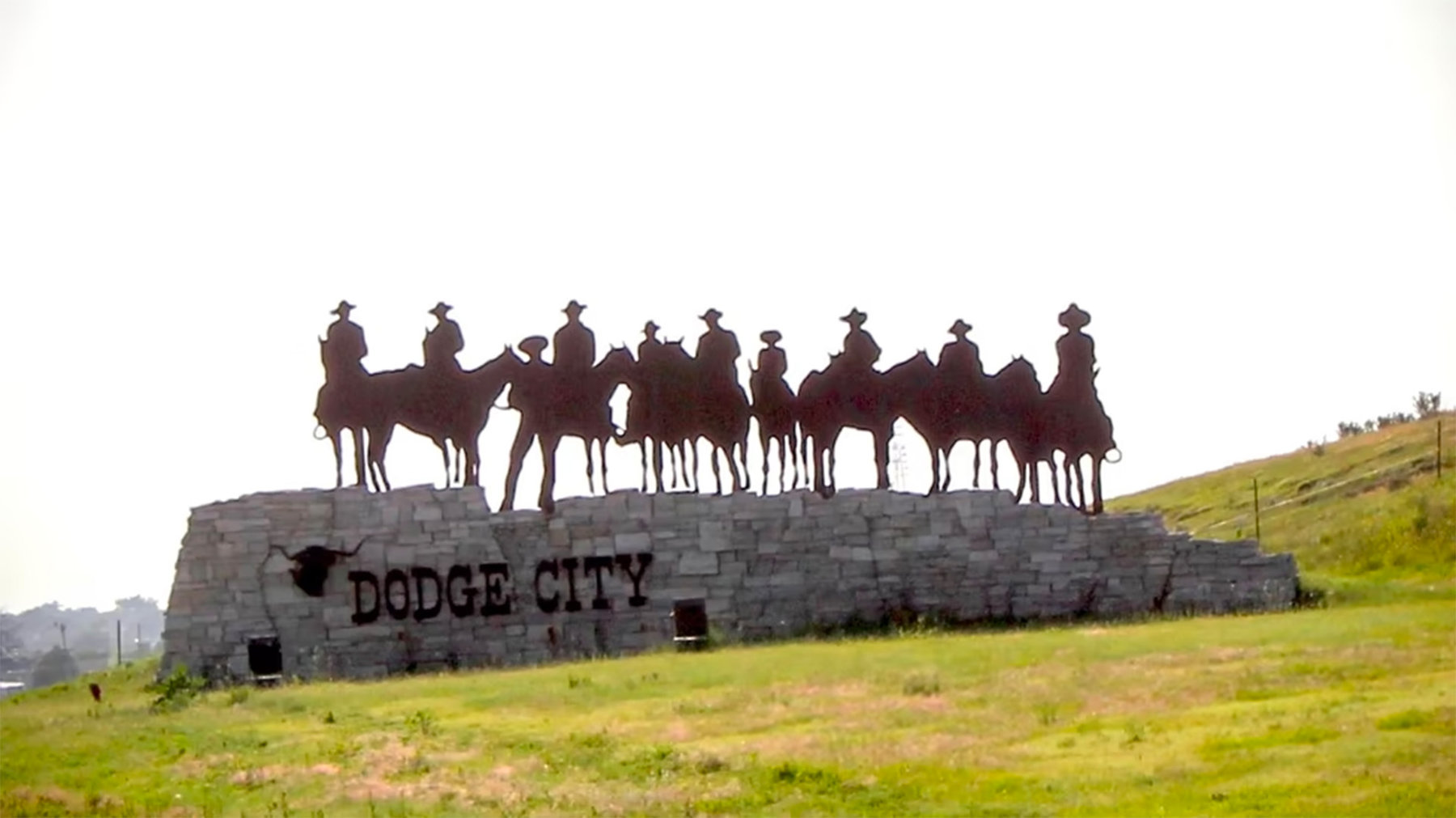My husband Jim and I have been flying around the country for a long time now, over three years criss-crossing in our small, single-engine Cirrus from Maine to Georgia, Oregon to Arizona. We have flown over the forests and rocky coasts of the Northeast; the autumn foliage in the Shenandoah; the mighty Mississippi and Missouri Rivers, sometimes flooded; and the wheat and corn fields in Iowa, sometimes parched. We have skirted north of the Rockies over vast desolate stretches of Wyoming or south along the Oklahoma panhandle and continuing west over the pastel deserts of New Mexico and Arizona.
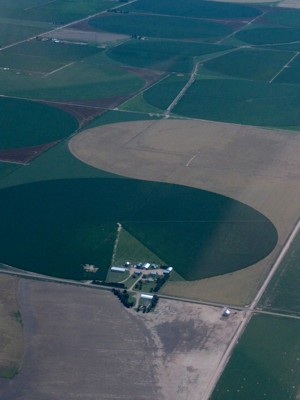
Sometimes we trace long stretches of busy I-80, looking down on the parade of semis hauling their loads to California or New York. Once we landed on the plateau runway above I-80 in Rock Springs, Wyoming, an area known for its trona, the sodium-rich mineral that is processed into all your baking soda. We booked what seemed to be the last available room in town, and bunked alongside lots of the truckers on their overnight stops. We followed some of them to the nearby Thai-Chinese-Japanese restaurant, figuring they would know where to eat.
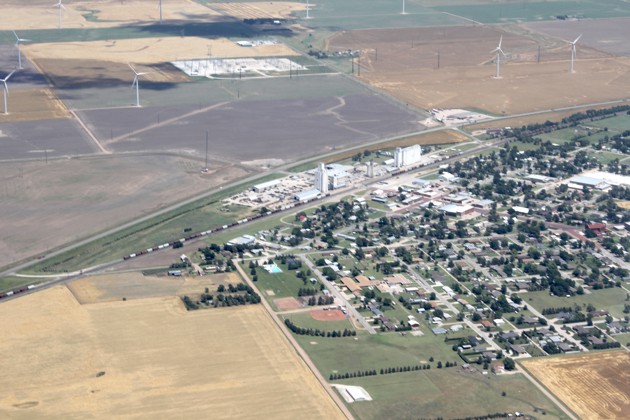
People often ask us, “Do you have a favorite city?” We used to, at the beginning of our journey. Jim and I would often say to each other, “Why don’t we live here?” We stopped doing that after a while because there were so many places that seemed like candidates. Eventually realism set in: The winters were too cold, or it would be too hard to reach the rest of our family, or it wouldn’t be sustainable for our work. After long periods away, we would hobble home, glad for our comfortable habits—picking up the morning paper from the front walk or pulling a few weeds from the neglected back garden.

Sometimes, we find a town whose personality leaves a big impression. Dodge City was one of those places. Nothing substitutes for actually living somewhere, but we try to find as many ways in as we can, connecting first with a variety of folks who can lead us to an understanding of the town, from the newspaper editors, the educators, the librarians, to the chamber of commerce, entrepreneurs, and mayors, the people in the arts, or recreation, or philanthropy, and the self-declared town historians. We saw those and many more in Dodge City. Here’s a little postcard of what Dodge City looks like.
* * *
A walk up Second Avenue in Dodge City starts from Wyatt Earp Boulevard at the south end. The Boot Hill Museum, the town’s main tourist attraction, is just to the west. It features a short block of shops and exhibits, a la Colonial Williamsburg, and local staff in period regalia stage a surprisingly alarming reenactment of a shootout in front of the Miss Kitty’s Long Branch Saloon. Intrepid fans of the 1950s TV series Gunsmoke, based on real life Dodge City, stop there on their cross-country drives, including many visitors from Germany, where Gunsmoke still enjoys a cult following.
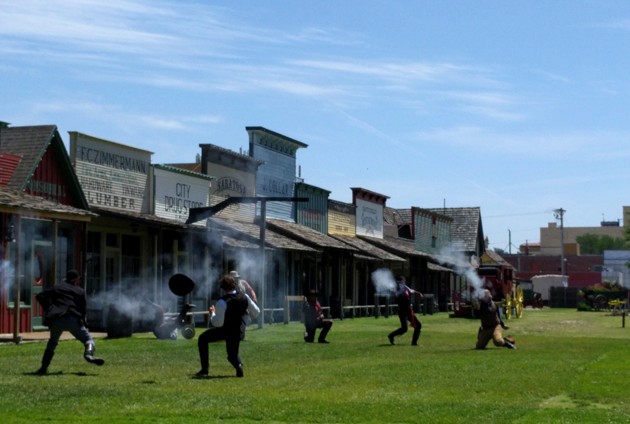
We happened to be in Dodge City on July 4. Like so many small towns in America, Dodge City goes all out with parades and barbecues. We stopped in at the evening program on the tented lawn of the Museum, featuring the Cowboy Band, an enthusiastic group of local musicians first assembled in the 1880s, plus cancan dancers and singers. The crowd, which looked to be tourists and locals, was standing-room only. Afterwards, we counted at least half-a-dozen fireworks displays along the flat horizons in Dodge, all visible from the third story of our hotel room.
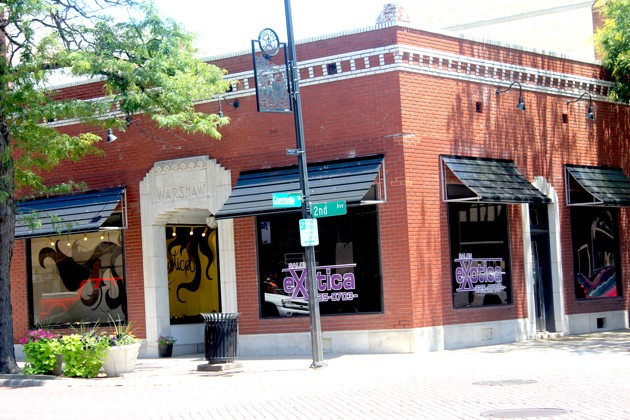
Back on Second Avenue, you pass the old buildings turned over from earlier merchants into bars, nail salons, or photographers’ shops. The name Warshaw is engraved over the entry on the front of one building; that would be the former clothier and the family that Dodge City’s current mayor, Joyce Warshaw, married into. Some shops still sold clothing, some with a western flair and others with quinceañera dresses for rent to the 15-year-olds in the now majority-Hispanic town. The building of the Dodge City Daily Globe is on the left. That was our first stop, where we talked with the managing editor, Roger Bluhm, who told us that he drank his way all day long through the remarkable growler-size mug of coffee that sat on his desk.
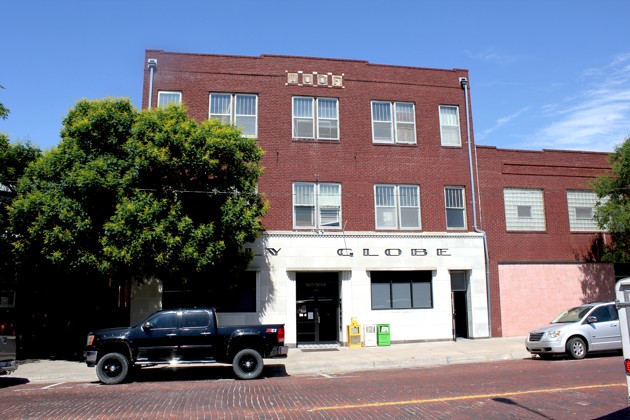
Just north is the town’s original Carnegie library building. It was opened in 1907, outgrown in 1970, and is now home to the Carnegie Arts Center. (More on the library and its heritage in Dodge City coming soon.) A little north is the city hall and courthouse, then the new library on the left and the district school-administration building on the right.
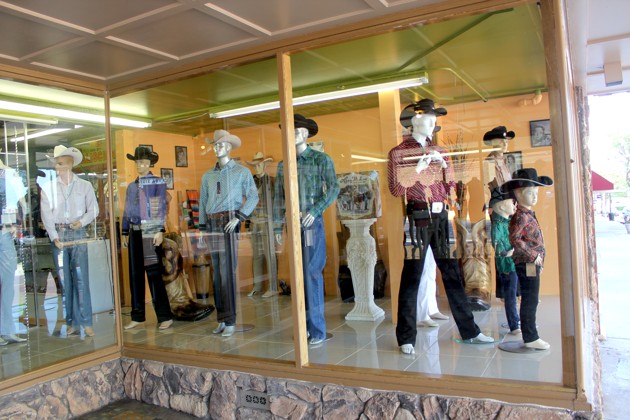
Downtown Dodge City is changing. It has a ways to go before it rivals everyone’s favorite model of Greenville, South Carolina, but it has potential and what lots of people would call good bones. Two new establishments are coming to town, a microbrewery called Dodge City Brewing Company, which Jim will undoubtedly write about, will be built on the still-empty lot on Third Avenue, a quick turn out of the Boot Hill Museum. This would count under #11 as one of Jim’s signs of comeback towns: the local microbrewery. Already arrived is the Boot Hill Distillery, which Jim will also undoubtedly write about. The ambitious renovation of the former Municipal Building is nearly finished, and we took a tour of the gleaming distilling room and tasted a few of the spirits.
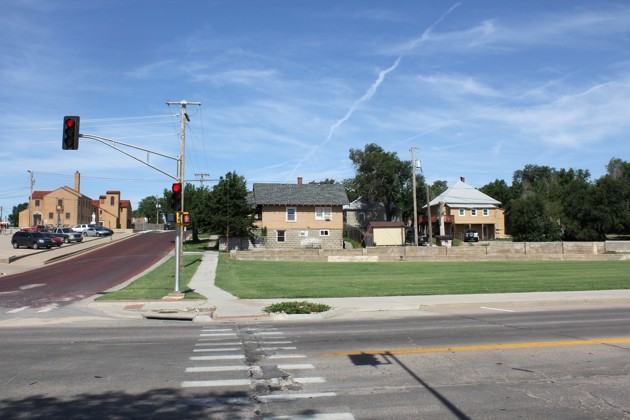
Wyatt Earp Boulevard, as the stretch of Route 50 is called in town, runs east-west through Dodge. As with most of the towns around this area of Southwest Kansas, the big old grain elevators dominate the skyline. The original Atchison, Topeka, and Santa Fe rail line runs alongside the silos, and you can hear Amtrak’s Southwest Chief whistle through a few times a day. Less charming is the row of fast food stops for hungry tourists—KFC, McDonald’s, Arby’s, Burger King, Subway, Sonic, Taco Bell, and the most strategically-located Applebee’s. So far, only a few local eateries have popped up to compete with these. The Second Avenue Lunch has great sandwiches and salads, and Cup of Jo-Nes coffeehouse is on Wyatt Earp, in a small bungalow with lots of Dodge City memorabilia and oilcloth-covered tablecloths.
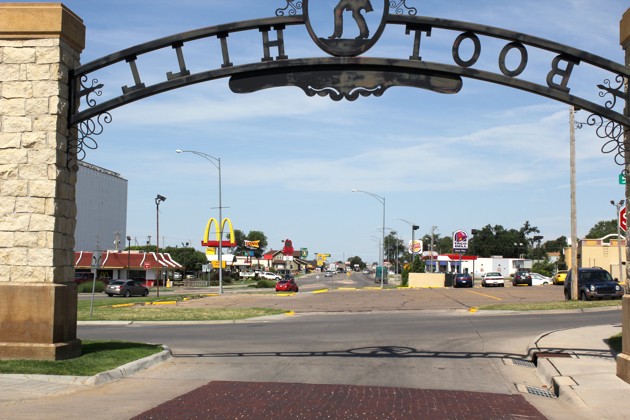
For big appetites, there are a number of steak houses. How can there not be? The meatpacking plants are the lifeblood of the town. “We don’t like to be known as the meatpacking capital,” one resident told me, but everyone also agrees that without the plants, there would be no town. You easily see the plants from the air over Dodge City, but on the ground, you have to drive around a bit looking for them. They are not obvious. We asked around about the best places to eat the local beef, and consensus was easy: Casey’s Cowtown. It is near the source, less than a mile and a half from National Beef. Mike Casey was schmoozing among the tables, and he proudly showed us his shrine to Willie Nelson, who stopped by on his roadtrips.
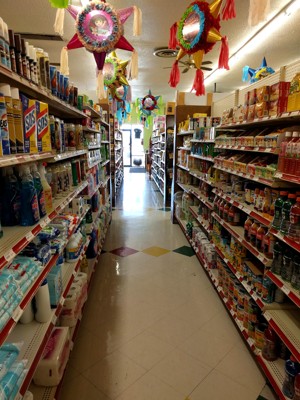
And while we’re on food, we shopped where everyone pointed us, Tianguis grocery and meat market, which had the most precisely-appointed shelving I’ve ever seen in my many decades of grocery shopping. It was described as the place to buy meat in town, but since we were only temporary hotel-residents of Dodge, we settled instead for the longlife homemade beef jerky, which I buy all over the country and keep in the plane for the times when the best lunch we’re likely to find during a long day of flying will come from a vending machine.
And I really drew the short straw one day when Jim and I split up our reporting visit. He went to a tortilla factory. I can’t remember where I went instead, but I can tell you what he said that I missed: the best tortillas that he—a Southern California-raised guy who knows—had ever tasted, tongue-burning hot off the griddle.
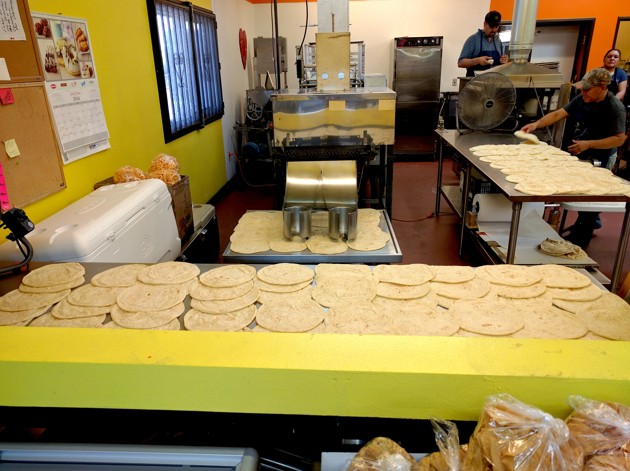
Turning the page in Dodge City, next up are some of the places and experiences that make it a great place to live.

